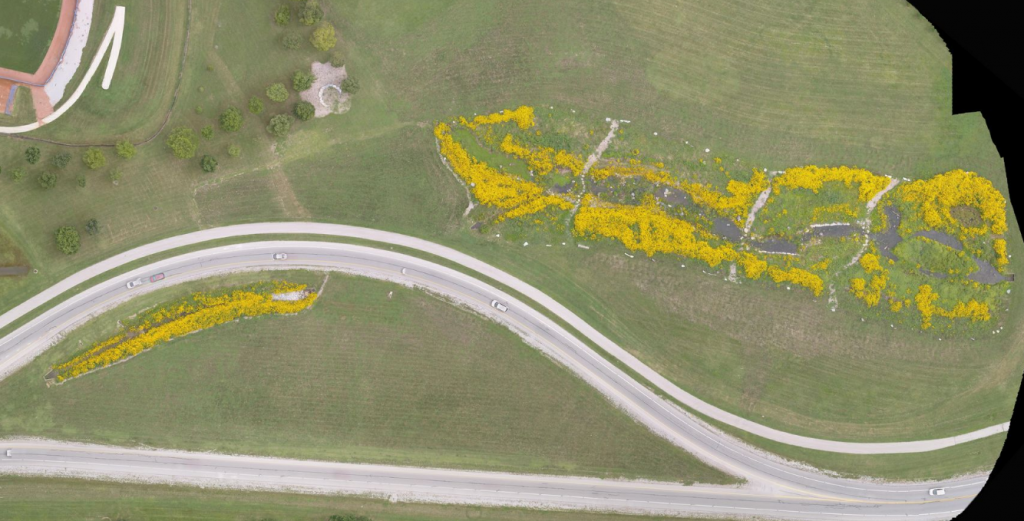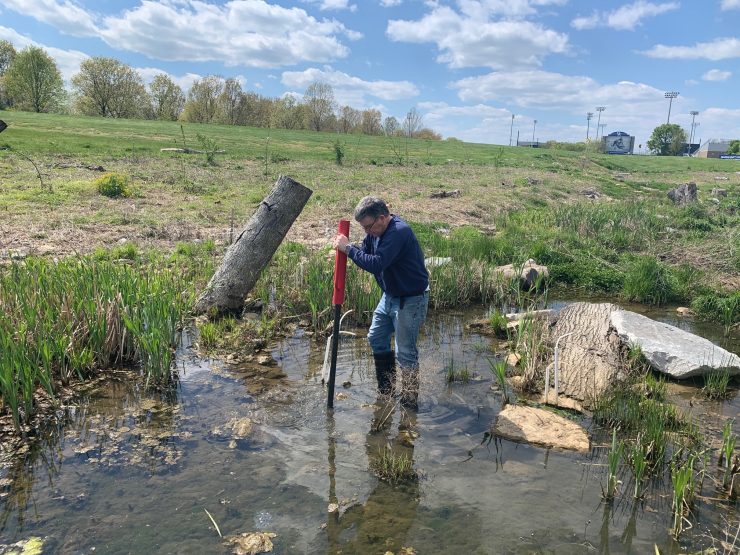How do you go from trying to prevent mowing equipment from making a mess of a perpetually muddy section of turf to watching a world-renowned hydrogeologist hammer piezometers into a stream full of minnows? Answer: partnerships, vision, and a commitment to students. These two scenarios (the mud and the minnows) played out in the same field below the UK Soccer Softball Complex off Alumni Drive and were separated by just a few years.

The scientist was Dr. Alan Fryar, a faculty member in UK’s Department of Earth and Environmental Sciences and a member of the Program Faculty for the Environmental and Sustainability Studies Program. Dr.Fryar’s interests broadly cover hydrogeology and environmental geochemistry. Research projects with students have included controls on the composition of groundwater in regional sedimentary aquifers, such as within the Bengal basin of India and the Texas High Plains.
The piezometers, simple tubes used to determine groundwater pressure by measuring the height to which a column of water rises against gravity, were being installed as part of a course he teaches in hydrogeology. His students are going to use the instruments in an assignment where they will learn how to measure several dynamic stream processes. Dr. Fryar would typically teach this class in western KY but due to travel restrictions caused by the pandemic he needed to find a place on campus.
Thanks to the vision of some key folks in UK’s Grounds department and Dr. Carmen Agouridis from UK’s College of Agriculture Food and the Environment, this unnamed tributary to West Hickman Creek – which had recently been an unsightly maintenance challenge – is now an excellent outdoor classroom that is perfect for Dr. Fryar’s class.
The power of partnerships made it possible. Dr. Agouridis and I submitted a grant proposal to the LFUCG’s Stormwater Incentive Grant Program to cover up to 80% of project costs. The UK Student Sustainability Council provided the funding needed as a match for the city’s grant program. With funding secured, Keith Ingram with UK’s Capital Projects Management helped assemble the design and construction team (above).

The ecological restoration of this 600 ft section of stream included restoring the natural grade of the stream banks, establishing a stream buffer composed of native plants (including dozens of trees), and the use of large rocks and trees to recreate the look and function of a natural stream.
Originally published May 18th, 2021

Next time you are out on the southside of the campus take a walk and explore this stream.



























